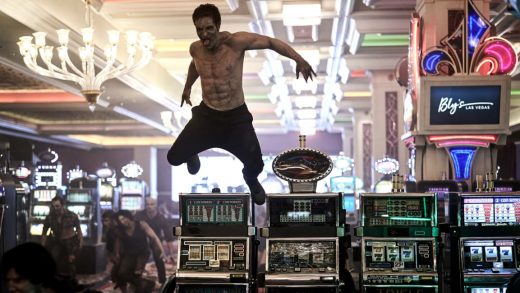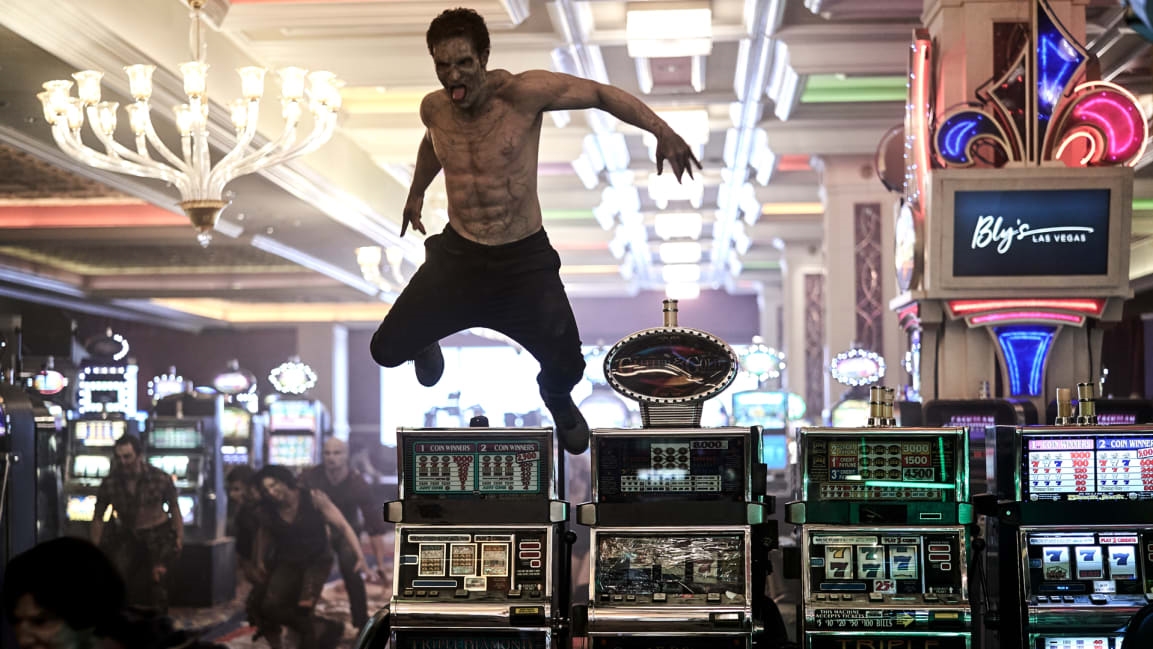Netflix’s ‘Army of the Dead’ reminds us that we’re not yet post-pandemic
All manner of guns go off throughout Army of the Dead, Zack Snyder’s turbo-charged sophomore zombie romp, streaming today on Netflix. The gun that may hit viewers the hardest, however, is the one that’s least lethal: a temperature gun.
Zombies can famously only be killed through brain trauma, so most of the film’s guns are aimed at once-human heads. But unlike that rather rare-in-real-life circumstance, many viewers of this film will have actually had a temperature gun aimed at their heads at some point in the past 14 months. (Some of us quite frequently!) Seeing that unfortunately now-common occurrence depicted onscreen here, in the first major zombie movie of the COVID-19 era (apart from South Korea’s Peninsula), will bring home the parallels of an undead plague and a garden-variety one in ways that older zombie movies simply can’t.
Army of the Dead is the latest chapter in the “of the Dead” series established by zombie godhead George Romero and updated by future DC franchise savior/saboteur Snyder with the 2004 Dawn of the Dead remake. The plot concerns a zombie outbreak in Las Vegas, which is quashed early on in the film in a stylish and inventive, all-hell-breaks-loose sequence, at the expense of the city’s habitability. From there we cut to an unspecified number of years later, when the United States is all set to hit the walled-off city with a low-yield tactical nuke. Before that can happen, though, Dave Bautista’s character is tasked with leading a ragtag team into the Z-zone for a classic Vegas heist.
Call it Oceans (of Blood) Eleven.
Unlike most other zombie movies, with the notable exception of 2007’s 28 Weeks Later, this one takes place mostly after a close brush with the apocalypse, in a world on the brink of returning to normalcy. Sure enough, Army of the Dead is being released just over a week after the CDC loosened its restrictions on mask-wearing because so much of the U.S. is vaccinated and ready to get back to the business of normal life. Although COVID-19 didn’t seem quite as much an extinction-level threat as zombies for long, it still feels somewhat miraculous to feel the pandemic begin to recede into the rearview, like the characters in this film after the opening sequence.
But just like those characters, we may also be getting ahead of ourselves.
That temperature gun mentioned up top is a fixture in the film’s Vegas-bordering quarantine camp, a minor burden the residents must endure that has the feel of an unnecessary formality. Kind of like having to wear a mask into a restaurant before taking it off at the table, despite being vaccinated. Of course, just as a zombie outbreak is never as contained as it may seem, America’s COVID-19 victory lap is premature as well. Our corner of the world isn’t even in the clear yet, despite how it may feel on the ground sometimes, while in other areas such as India, the pandemic is still rampaging. Experts are even warning we could go right back “to square one.”
Zombie films have always been outstanding Trojan horses for unsubtle messages—about conformity, consumerism, the military-industrial complex, and any number of other concepts over the years. This time, however, the call is coming from outside the house. Snyder never meant for his film, which went into production in July 2019, to have a pandemic message baked into it, but alas, one exists: Never take a reprieve from a plague for granted, but always remember that it may only be a temporary one.
Fast Company , Read Full Story
(24)



